How Doth the Little Crocodile...
⬅ previous ⬆intro next ➡Day 4 ~ January 23 ~ Luxor

We're staying at the rather fabulous Winter Palace hotel; or strictly speaking, its perfectly decent but slightly less fabulous modern annex. Agatha Christie wrote 'Death on the Nile' here, and George Herbet -- Lord Carnavon -- who financed Howard Carter's discovery of the tomb of Tutankhamun was a regular visitor.
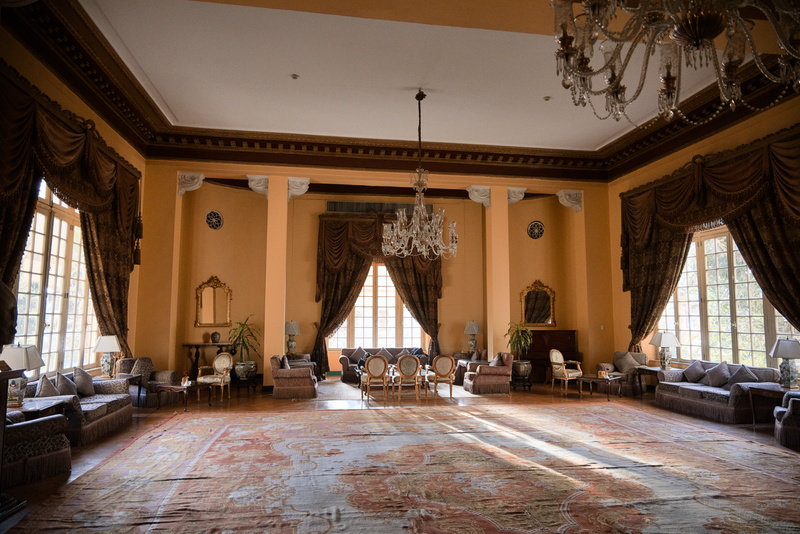
This very grand ballroom is the venue for our briefing this morning. It's perhaps more than we need, as we will all be able to sit around that small coffee table in front of the window.
At breakfast, we'd had a suspicion that we'd identified our fellow travellers, and so it proves: Duncan and Janet, and their adult daughter Sophie. However, it turns out I won't have any decent pictures of them for a few days yet, so for now you will just have to use your imagination.
Anyway, today we've got some serious Egypting to do. We're going to get a ferry across the river to meet our bus, then off to the Valley of the Kings, Howard Carter's house, Hatshepsut's Temple, the Valley of the Queens and the Colossi of Memnon!
Rawya says we'll have plenty of time to sleep when we go home.

Golden Boat awaits us.
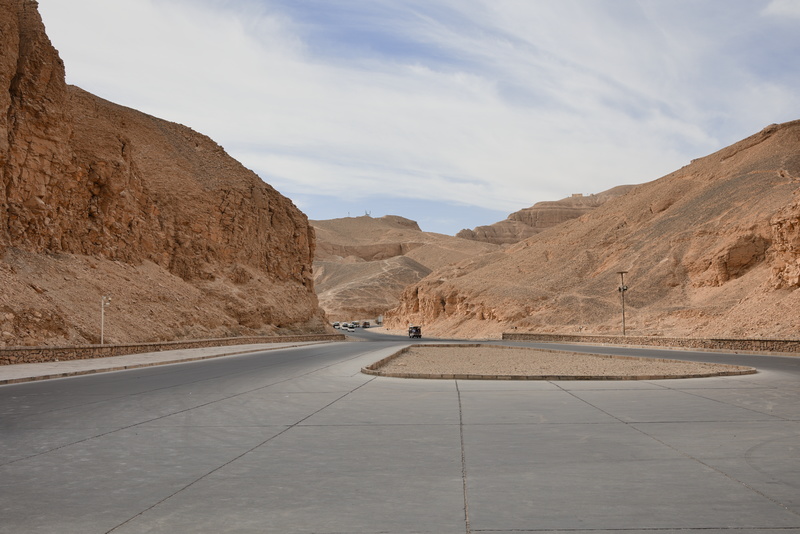
We arrive at the entrance to the Valley of the Kings. It appears deserted, but look closely: a fleet of little electric tuk-tuks is hurtling towards us! It's not exactly a long way, but we are expected to hire transport.

Aha, you can now see the backs of Sophie's and Duncan's heads as we ride in support of Free Palestine. Unsurprisingly the Egyptians tend to side with the Palestinians, but there's no sign that the Gaza troubles have had any real effect on daily life here, at least for now. And as I said earlier, we were slightly surprised not to find our plane emptier, but apparently the Red Sea resorts, and particularly places like Sharm-el-Sheik which are close to Israel, are noticing a real decline in tourist numbers.
There are a number of tombs open to visitors here, but some are more interesting than others and we have three individual visits per ticket. After telling us something of the history of the place, Rawya gives us a rundown of what she thinks are the best options and we are then left to explore on our own.
We choose to start with KV 8 (all the tombs in the Valley are numbered thus): Merenptah.
He was the thirteenth son of Rameses II, but the latter lived so long that all the previous twelve died first and Merenptah became Pharoah. He was aged around 70 when he succeeded and only reigned for about ten years. Do we see a parallel with Elizabeth II and Charles III here?
Incidentally, if you look him up on Wikipedia, you will find yourself on a page called "Merneptah (Redirected from Merenptah)". Ancient Egyptian hieroglyphs did not directly represent vowels, so the sounds between written consonants are basically made up using rules that are far from universally agreed. I confess I will probably not be consistent if I refer to the same Pharoah in different places, especially if I'm copy-pasting something I've found online.
Anyway, a few pics of the wall art.


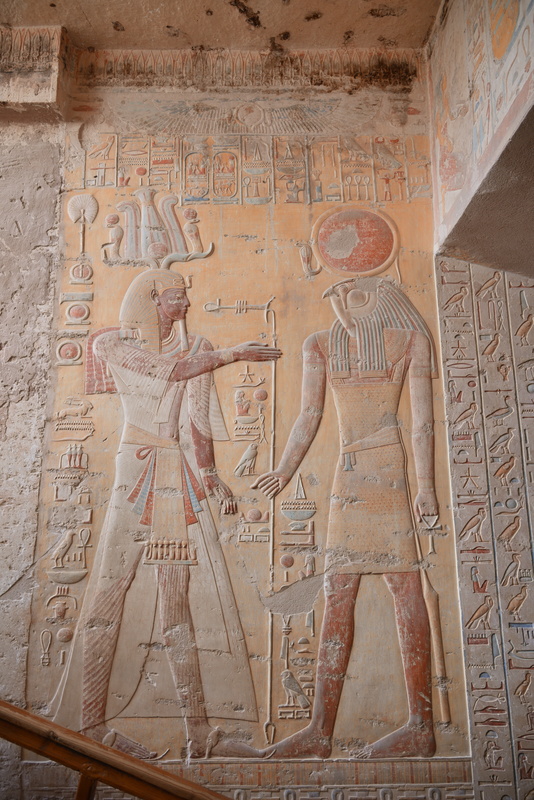
Next, KV 14: Tausert/Setnakht.
Tausert (or Twosret, or Tawoset, or Tausret, etc) was the last Pharoah of the Nineteenth Dynasty, and was probably originally a wife of Seti II, then Regent for his successor, Sipnah. The latter died aged only about sixteen and Tausert took the job for herself, though she only reigned for a year or two. It's known that there was then a civil war in which Setnakht -- founder of the Twentieth Dynasty -- was victorious, but it's not clear whether there was a power vacuum after her natural death or whether he overthrew her.
Either way, it seems Setnakht decided "tu casa, mi casa" or something, and took her tomb for himself. (The full story is a lot more complicated than that, but I will leave you to do your own Internet search if you want to dig deeper.)
Again, just some pictures without attempting any detailed explanation.

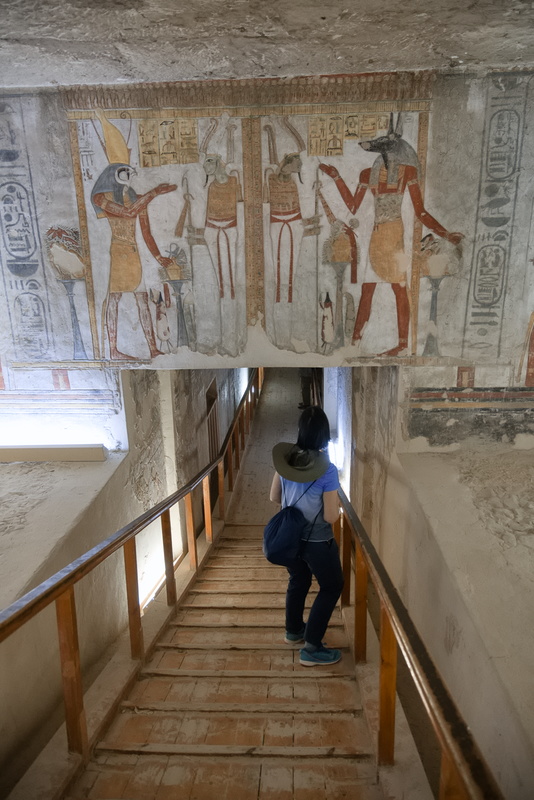

Finally, KV 15: Seti II. As mentioned above, he was Pharoah before Tausert, who was his one of his wives.
This tomb isn't as richly decorated as the previous two.

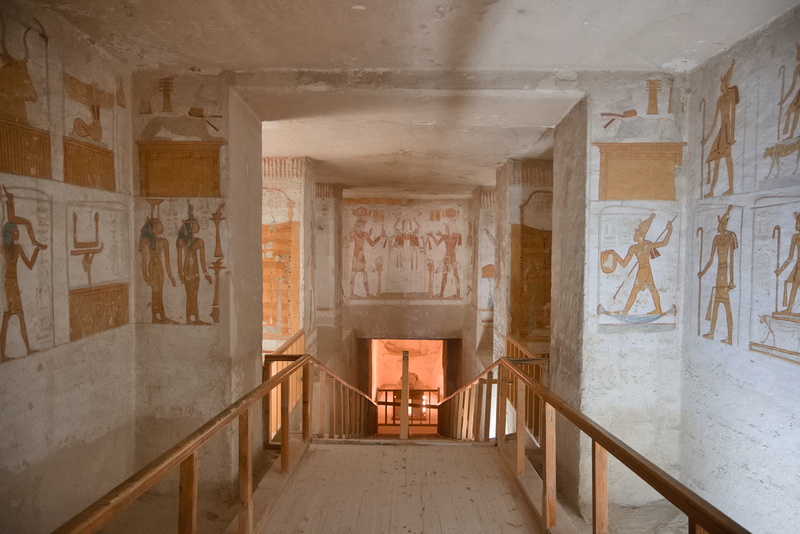
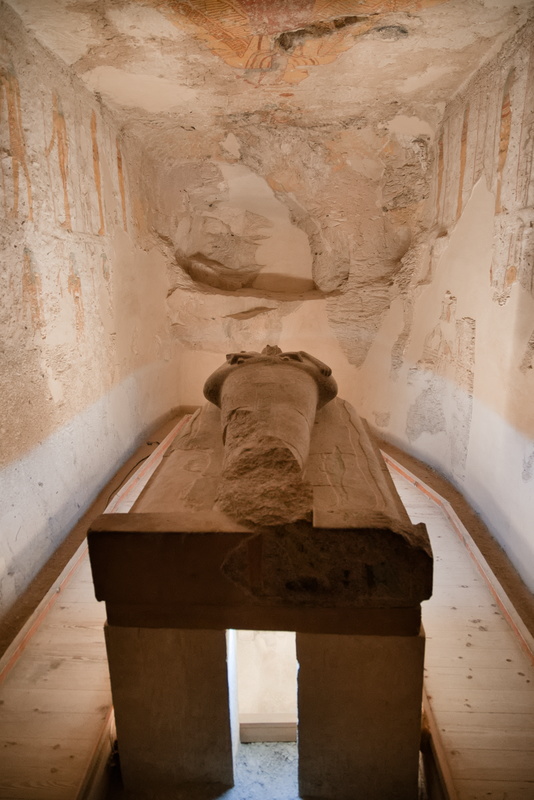
Ok, that's our Three Kings, time to move on.
[Oh, you may possibly be thinking, "How clever of Steve to remember all those individual tomb numbers and names". Ah, well, yes... Truth is I sometimes remember to take a picture of the sign at the entrance, but more often I don't. However, I have a GPS unit that continuously records my exact position, and I can overlay that trace onto a map showing me exactly where I went and when.
Annoyingly, the program I wrote to do this the way I want no longer works, because it was based on a technology which has been left behind by 'progress'. Yeah, it's not just ordinary folk who get annoyed by their computers suddenly behaving differently to how they used to, even people like me who know why it happens and why it's (sometimes!) necessary don't actually like it. But a combination of a couple of other programs can be bodged into giving me what I need for the present task, so re-writing my own will have to wait.
Oh, and yes, most phones can do GPS tracking too, but they almost certainly aren't as accurate and absolutely certainly won't do it for long before running the battery down. We had exactly that problem on a cycling holiday in Northern Spain last year, which we were navigating using a phone app. On a long ride one day, my phone died and we had to switch to Amanda's to finish our route.
EOD: End Of Digression.]

This is the house that Howard Carter lived in while in Egypt. After his death, it became rather run-down until it was restored in 2009 and turned into a museum.

These aren't original items, but entirely typical of what Carter would have had.
A short walk from the house, there's a replica of Tutankhamun's tomb, created by ultra-precise 3D digital scanning and printing. It's very impressive!

Rawya explains the scene.

If you can tell the difference between this and the real tomb art in the previous pictures, I suspect you're lying!
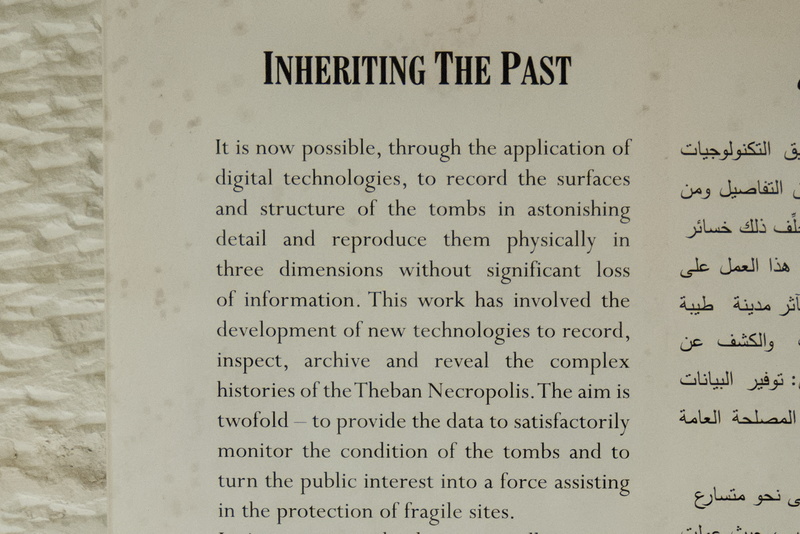
There's a board explaining what they've done. It looks like very similar - and it turns out to be exactly the same! - technology that we came across three years ago at Strawberry Hill House where it was used to recreate 18th Century oil paintings.
This article about that work also mentions the Tutankhamun project. The company behind it all is Factum Arte. And this is a bit mind-blowing: an Egyptologist called Nicholas Reeves believes that the digital data has allowed him to discover a hidden entrance to Nefertiti's tomb in the walls. It's still a bit of an out-there theory, as radar scans in 2022 failed to provide solid evidence, but it's fascinating nevertheless.
Onward then, to Hatshepsut's Mortuary temple!

I know it's been restored, but from a distance it almost seems too clean.
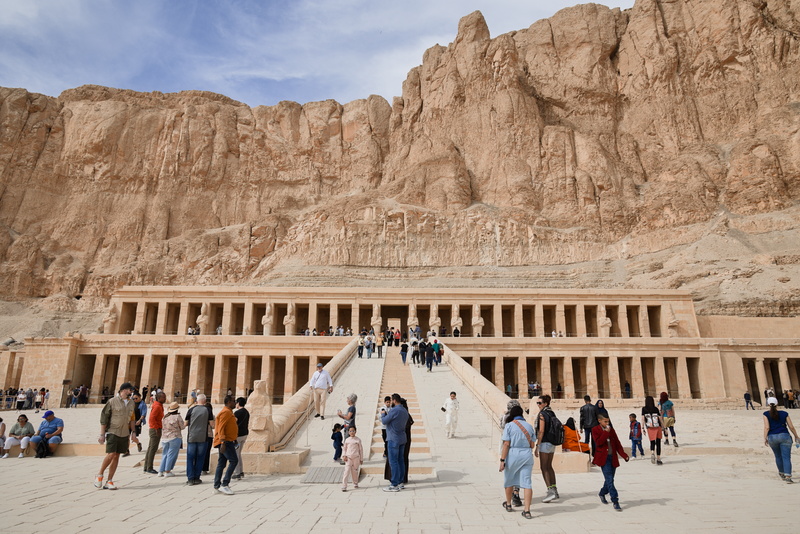
Closer up, somehow it doesn't look quite so incongruous. I don't know why (and your opinion may be different, of course).

You can see where this statue has been patched, but I think it's otherwise mostly original. Many of the others are in far poorer condition.

For such a grand facade, there's relatively little that's particularly photogenic inside. This pylon carving for example is much simpler than many we've seen, and there's not a huge amount more inside.
['Pylon' is a curious word. In our present context, it means (according to Wikipedia,
"A pylon is a monumental gate of an Egyptian temple. The word comes from the Greek term πυλών 'gate'. It consists of two pyramidal towers, each tapered and surmounted by a cornice, joined by a less elevated section enclosing the entrance between them"
But of course, in modern English usage, it means several other things: most often the big metal lattice towers that carry high voltage electrical cables; but also a mounting point for aircraft components such as engines or weapons; the support tower of a suspension or cable-stayed bridge [btw, that distinction will feature later]; and more. So how does the etymology work? It's not really clear, although it's not a ridiculous stretch to go from a gateway defined by towers to a tower in itself. It's still hard to fathom the non-towery meanings.]

Obviously a major structure in its day, but you have to use a lot of imagination now.
Now a break for lunch; not exciting enough to document. In fact I don't even have boring pictures I am not bothering to show, literally nothing.
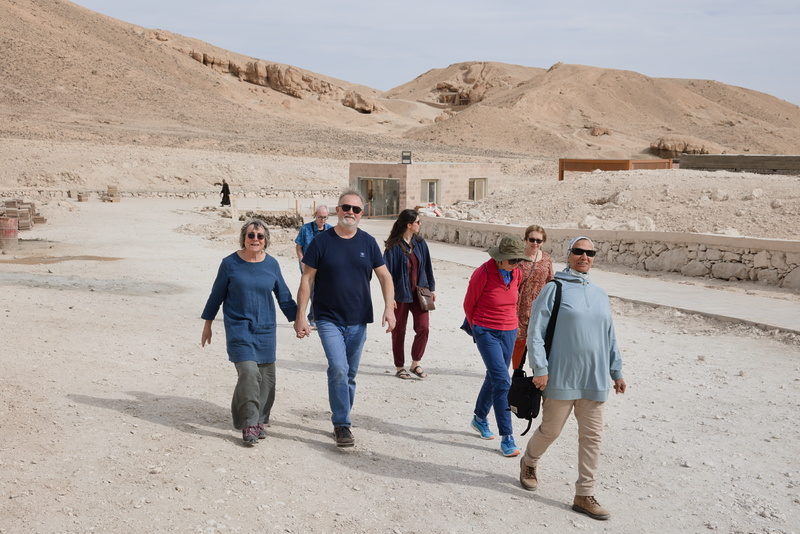
We can walk from the car park to the Valley of the Queens. This is my first photo of the full group (excluding myself, of course), so in strict left-to-right order, we have: Lynda, Duncan, Rob, Sophie, Amanda, Janet, Rawya. Duncan's a bit slow on his feet, but he's not going to let anything stop him if he can help it.
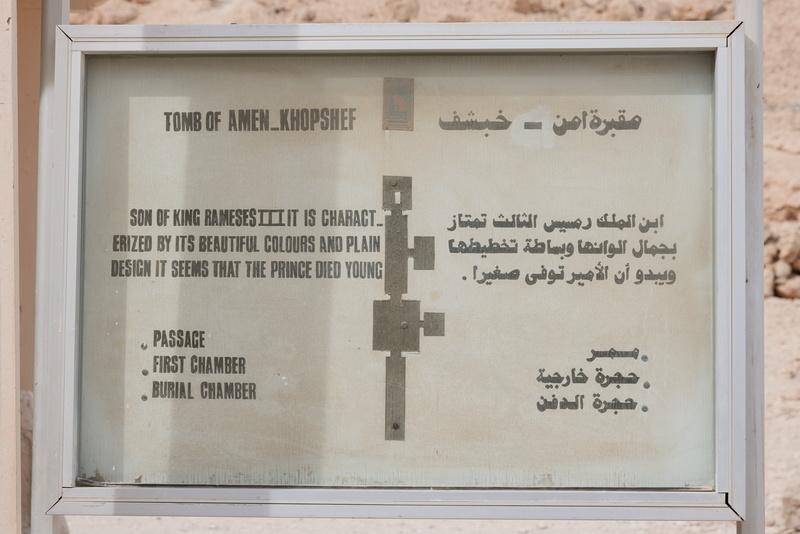
Or "Amun-her-khepeshef" as Wikipedia spells it. Not to be confused with Amun-her-khepeshef, Amenherkhepshef, Amenherkhepshef or Amum-Her-Khepesh-Ef. See Wikipedia's disambiguation page.
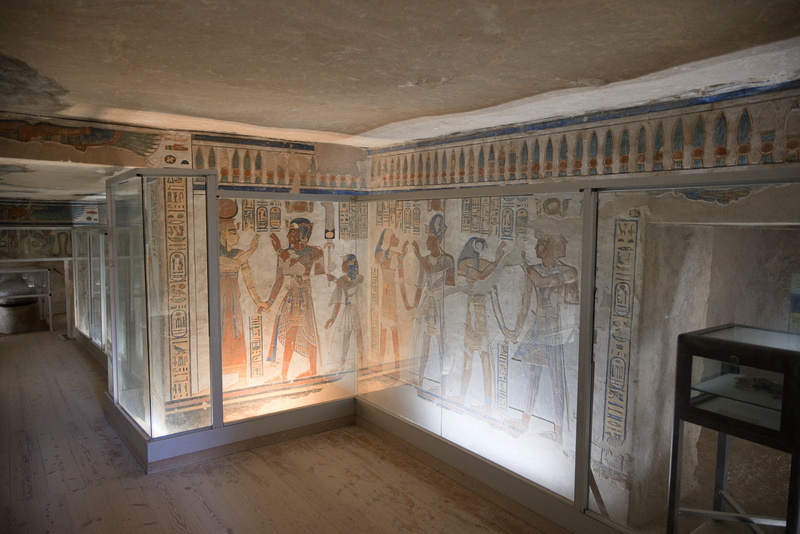
Inside, they are trying to protect the walls with clear acrylic barriers. However, it's not quite that simple. Although the plastic sheets prevent people touching the walls or breathing too heavily on them, they reduce the air circulation and -- ironically -- increase the local humidity.

For now at least, the colours are clear and strong.
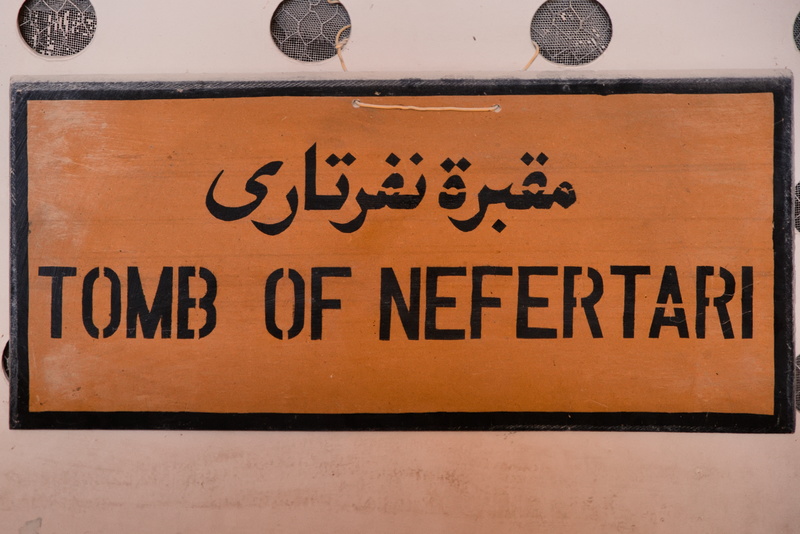
The tomb of Nefertari is an extra cost, and not cheap at that. Rawya recommends it, though, and that's good enough for me. Some of the others hum and haw a bit, but in the end we all sign up.

Can't deny it's pretty stunning as we enter.
No apologies, I'm going to include quite a few pictures here without further comment. Rawya was right that this place is worth the extra.
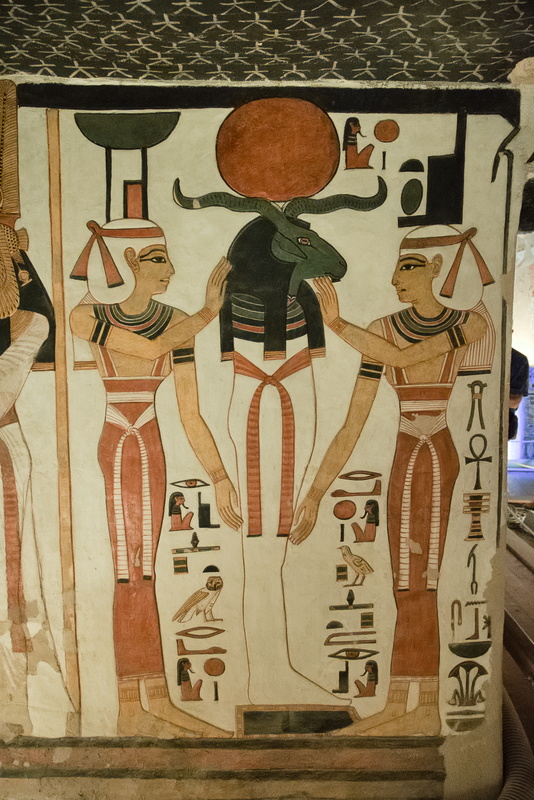

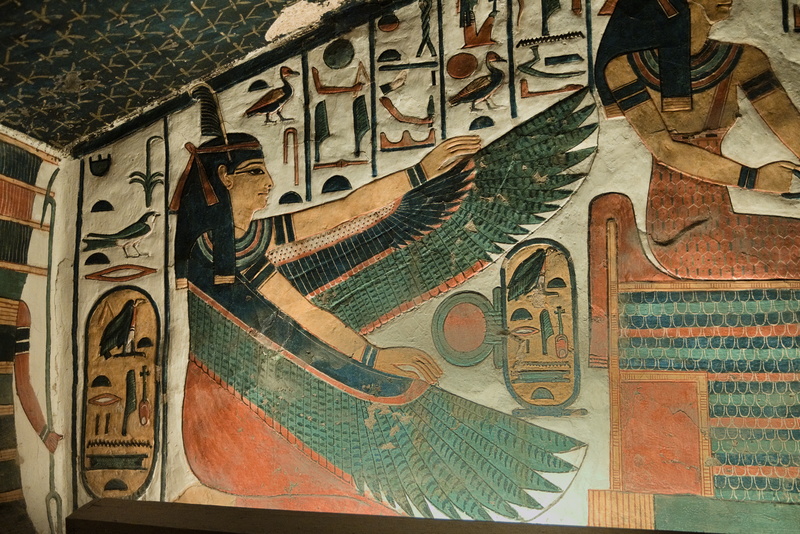
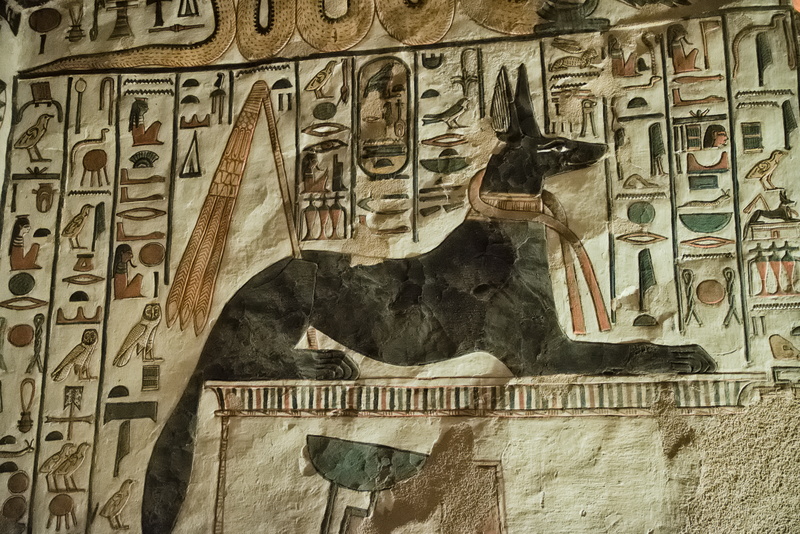
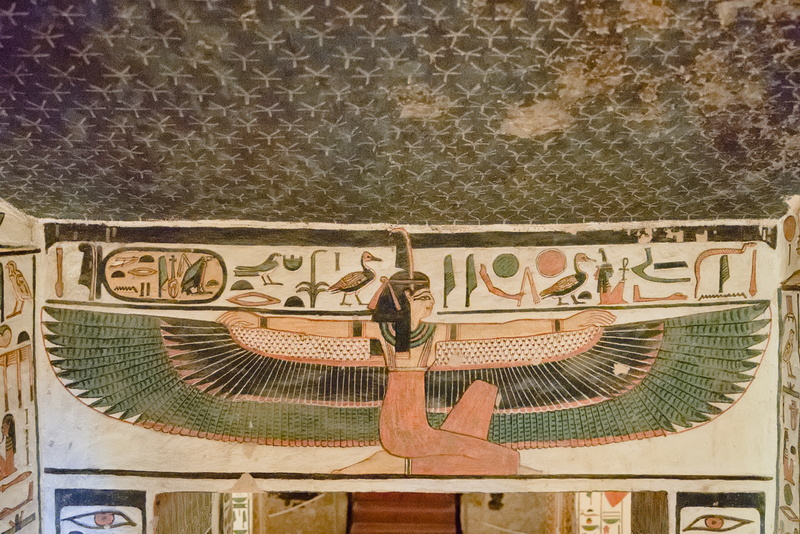
None of this "use your imagination" stuff here, these paintings are still pristine after well over three millennia!

Across the road from the place where we had lunch are the Colossi of Memnon, two giant statues of the Pharoah Amenhotep III at the front of the ruins of his mortuary temple.

So if they are statues of Amenhotep, why are they called 'Memnon'? It's not entirely clear, but the misattribution dates back to the Roman era, when inscriptions in Latin and Greek referring to the mythological king were carved into the statues. Wikipedia includes this link to a paper by Polish Egyptologist Adam Łukaszewicz from the truly wonderfully titled "Journal of Juristic Papyrology" discussing the matter.
When built, the temple complex was the largest in the whole of ancient Egypt, but it was flattened by an earthquake not long after construction. Another later earthquake, Nile floodwater damage and removal of stone for re-use elsewhere mean that almost nothing is now left.

If you need the toilet after visiting the Colossi, you can be assured that this establishment is sterile and clean!

Back to take the boat to return to our hotel.
There are some strange messages on some of these boats: "No Woman No Cry" and "Welcome to Titanic" here.

Gaddis and Co is a curious emporium next door to the Winter Palace. It's like a department store with no departments, but seems to sell a bit of everything.
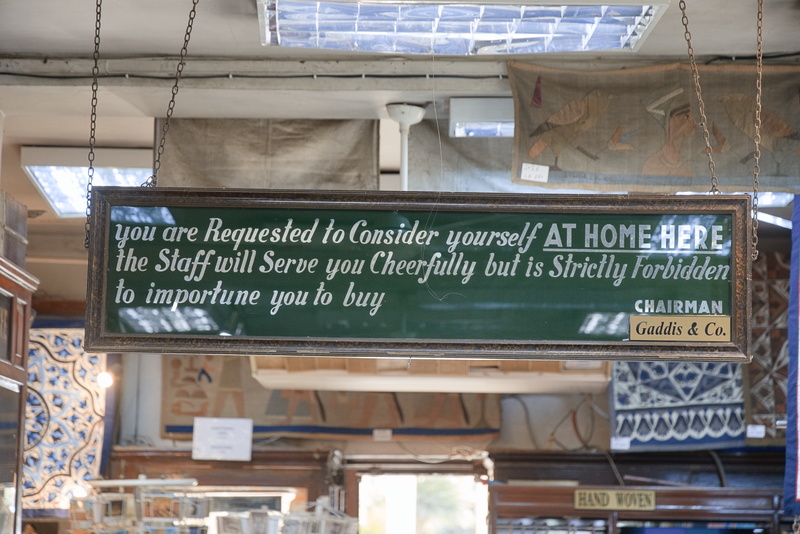
This is a message that many other Egyptian vendors should take to heart!
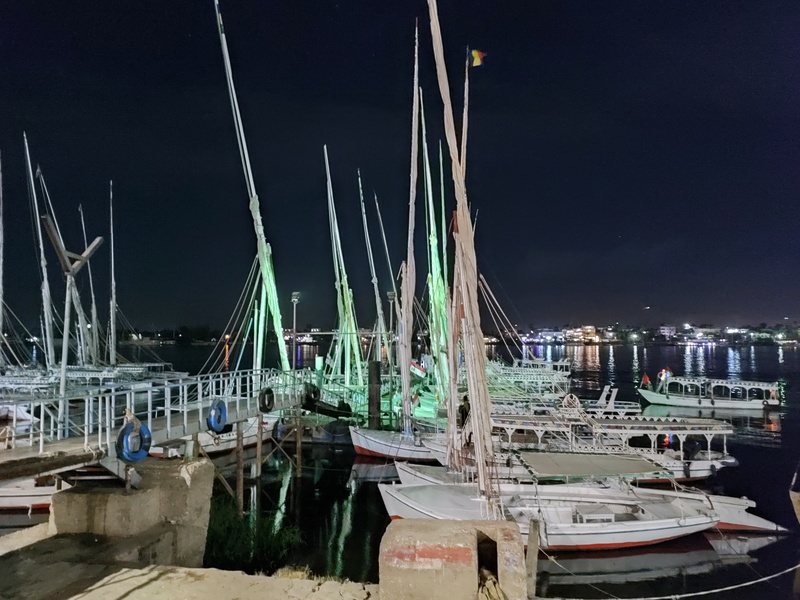
For dinner, we take a short walk from the hotel to a riverside restaurant with a view of the Nile.
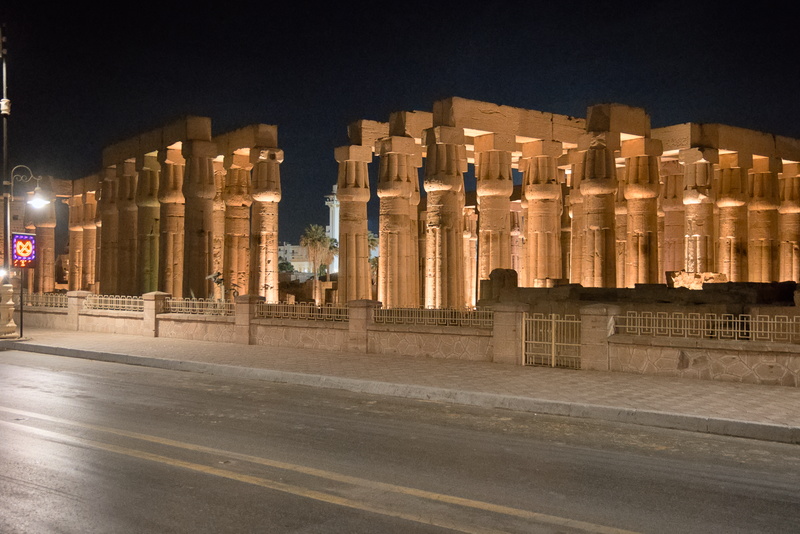
We then walk down the road a little to see the Luxor temple floodlit by night.

We'll visit it properly tomorrow.
⬅ previous ⬆intro next ➡